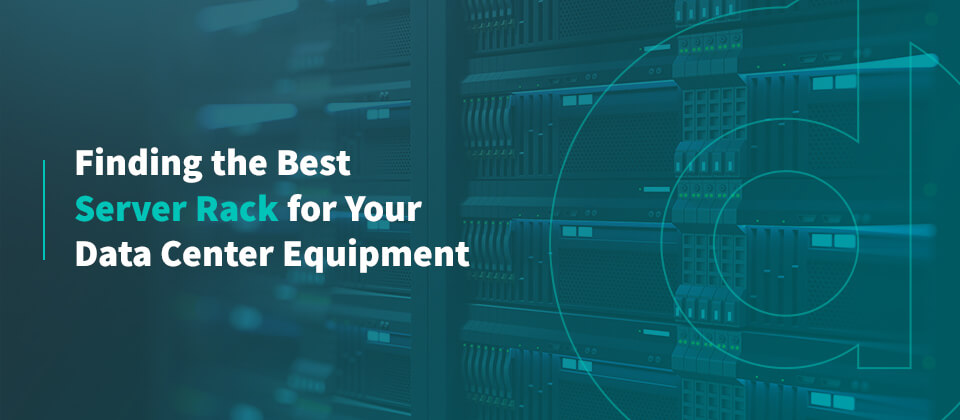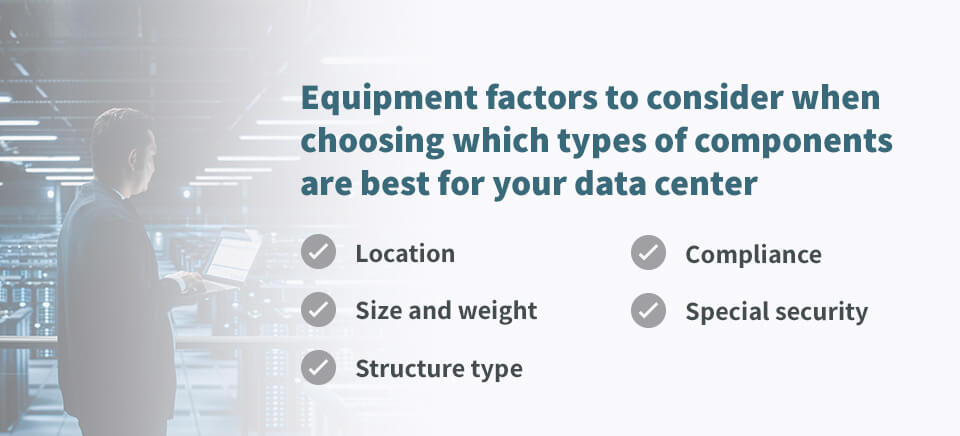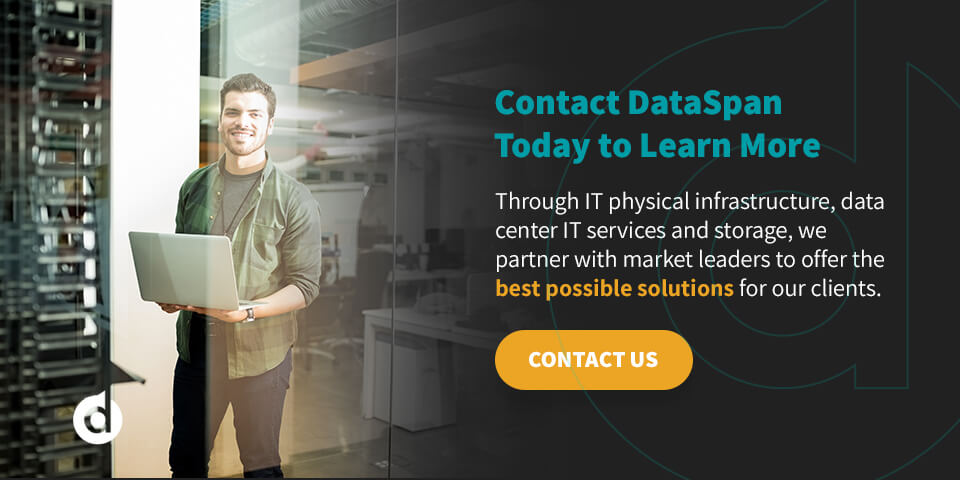Finding the Best Server Rack for Your Data Center Equipment

Server racks are an incredibly important part of a data center. However, they are not a one-size-fits-all piece of equipment. Understanding server rack components involves details that will ultimately provide your data center with better organization, amongst other benefits.
To the untrained eye, server racks may seem like nothing more than a filing cabinet or a locker with their mainframe and mounting rails, but racks often come with customizations to fit the data center’s needs.
Understanding the Types of Server Rack Components
Server racks contain different makes and models of components that vary based on your IT requirements. Some basic parts are the same across the board.
Every server rack will have several basic components, including:
- A motherboard or system board: A motherboard uses data buses to communicate with other components. They are designed to be efficient over long periods of continuous use while processing a lot of simultaneous requests from network computers. This heavy workload requires them to maintain high levels of reliability.
- Central processing unit (CPU) or processor: A CPU executes starting instructions from a program or application. Most CPUs today have multiple processing cores that allow them to handle multiple instructions simultaneously, all on one chip. They work through the process in three stages — fetching the instruction from the random access memory (RAM), decoding that instruction and executing it into the relevant parts of the CPU.
- Random access memory (RAM) or server memory: These modules reduce the risk of bottlenecking — a point of congestion — and increase the speed of data access. Data stored in RAM is kept as long as the computer is on and is reloaded into it when the computer is rebooted. It functions as more of a short-term memory, as it cannot store permanent data.
- Host bus adapter (HBA): An HBA gives you the ability to connect external devices to equipment in your server rack. It functions as an expansion card that enables connections between the computer and peripheral devices. It also provides input/output support and processing.
- I/O ports: This could include USC, serial ports or AUX ports, which are likely already embedded in your system board. The ports connect the CPU to a peripheral device or a network using either a hardware interface or network interface.
- Drive bays: Drive bays allow you to add hard drives or solid-state drives to the servers in your server rack. They come in sizes based on the size of the discs, not the drives, and allow certain peripherals, like disk drives, to be plugged into the computer.

Many of these pieces of supporting equipment help keep rack servers from overheating. Here are some equipment factors to consider when choosing which types of components are best for your data center:
- Location: Where will your server rack be located? What are the environmental conditions in that location? Does it need to be portable?
- Size and weight: Is your equipment standard size? The height and depth can vary greatly. It should fit securely in your space with plenty of room for airflow and user navigation. Make sure you weigh your equipment and that it isn’t over the server rack’s weight limit.
- Structure type: Do you need side panels, a front door, rails or a lot of cable management? Are you concerned about security? Think through your equipment and what it needs to function properly.
- Compliance: Know the compliance standards you must meet before seeking the right rack solutions for your data center.
- Special security: Details as deep as geographical issues like seismic activity in earthquake zones should be evaluated when considering rack servers.
Benefits of Server Racks
Server racks have obvious benefits like better organization and security for your computer components and other data center equipment. Server racks are:
- Convenient: Whether for computer components or data center components, server racks often have rackmount servers that are easy to add or remove along rails if applicable. The horizontal stacking system also saves a lot of space in your data center.
- Expandable: Adding more or upgrading your current rack is easy. If your equipment is hot-swappable, you will be able to remove it without turning off the power.
- Consolidating: Server racks allow for consolidated network resources. Because every rack server has network interfaces, it makes installing a network switch into the rack and connecting all servers to the switch a simple process.
Each server rack component has unique benefits as well:
- Motherboard: There are numerous types of motherboards that allow consumers to find the one that best fits their needs.
- CPU: The CPU’s small size and big power give you the ability to crunch data faster.
- RAM: Upgrading your RAM allows faster processing speeds, streamlining your whole working process.
- HBA: Using an HBA reduces the load on the primary processor, helping the system run more smoothly.
- I/O ports: I/O ports give you extreme flexibility in interacting with your software and making it as easy as possible.
- Drive bays: Drive bays allow users to add external peripherals to be plugged into and transferred onto the computer.
Contact DataSpan Today to Learn More
DataSpan has a long history of helping data centers store, access and protect their data. DataSpan continues to evolve as IT services evolve. Through IT physical infrastructure, data center IT services and storage, we partner with market leaders to offer the best possible solutions for our clients.
When searching for a server rack — whether your needs are scalability, thermal considerations or anything in between — DataSpan is ready and willing to help you find the perfect server racks for your data center. We have solutions designed for branch offices, small offices and non-IT spaces. Whatever your room, time and budget, we have a solution for you.
We are trusted as a leading data center equipment provider and want to collaborate with you from concept to installation to long-term maintenance, down to the size, color, assembly and latch. Our features include:
- Size selection: Choose the best height, depth and width for your space.
- Latch options: We have standard, electronic or dial combination latches.
- Other features: Choose components like top panels, side panels, full doors, split doors, cable management cars, casters and leveling feet.
Contact DataSpan today to get started.

About the Author: Alex von Hassler’s long term focus is the continued testing, learning, and deployment of modern IT solutions. During his years as a DataSpan team member, his responsibilities grew from managing Salesforce CRM to improving system security, creating marketing initiatives, as well as providing continued support to the highly motivated and experienced team in an ever-changing industry. As DataSpan evolves to provide the best-fitting IT solutions to its customers, Alex von Hassler continues to hone his skills in the world of web-based ERP systems, security, and best customer engagement practices. Empowering such a dynamic team with the right tools provides him with enormous gratification.








